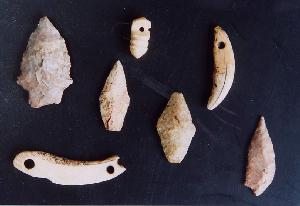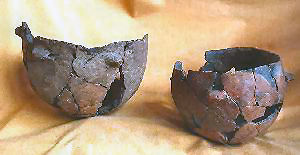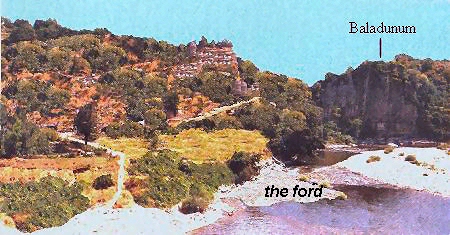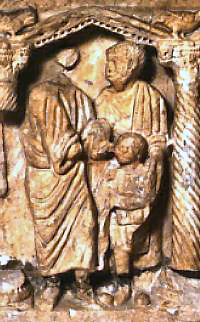 |
Over 100,000 years ago lived Neanderthal Man...
 |
These came from the south. Around the village
can be found vestiges of their homes , amonst rocks and caves containing potteries,
stone and metal objects .They kept large troups of sheep and goats, buried
their dead in collective tombs, chambered tombs and dolmens. Research in the
last 50 years has shown that large numbers of them dwelt
on the " Gras " of Balazuc.
Around 2,500 B.C. they knew copper, brought
in the form of beads and tools for piercing leather (bradalw). From 2,000
B.C. bronze objects, axes and beads, were imported via the Rhône Valley and
from the Languedoc.
Important changes at the end of the Bronze Age. From the 11th B.C. onwards,
tribes from eastern France, excellent farmers made the first terraces on the
hillside slopes so as to plant crops of them. Advanced metallurgy provided
them with bronze for tools and jewelry. Their dead were buried in individual
tombs, or incinerated, the asches being placed in urns then put in the earth.
In Balazuc itself, there existed a ford for crossing the river, a little downstream
from the actual bridge ; it is used in the 8th century because a votive axe
set down in the river in this period.
Migrants in
the Iron Age
From the 6th century B.C. in the beginning of the Iron Age, there were the
first great invasion with horsemen that used breeding. These nomads, cohabiting
with peasants, are mainly known by their tombs beneath tumuli of stones.
The Gauls followed in 3rd century B.C. settling down to cultivate the land.
Their presence still lives in local place-names.
 |
 |
The Roman Road
The two large cities of Uzès (Department of the Gard) and Alba (Alba
Helviorum in Vivarais) were connected by a road during the reign of Antonin
the Pious in the second century, during
the period of the Pax Romana (Roman Peace). This
road can be followed by the milestones placed along it on the roadside
at Pradons, at Saint-Germain; near Sauveplantade, where Jupiter was worshipped,
by vestiges of a bridge over the river Auzon and part of the road at Saint-Germain.
 |
| This rare object can be seen in the Museum of Gallo-Roman Civilisation in Lyon (a replica can be seen in the courtyard of the Balazuc Town Hall). |
 |
 |
